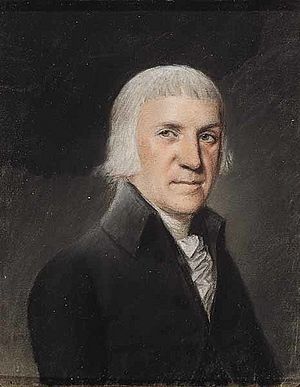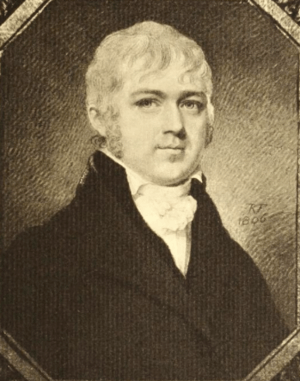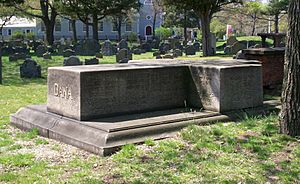Francis Dana facts for kids
Quick facts for kids
Francis Dana
|
|
|---|---|
 |
|
| United States Minister to Russia | |
| In office December 19, 1780 – September 1783 |
|
| Appointed by | Continental Congress |
| Succeeded by | John Quincy Adams |
| Associate Justice of the Massachusetts Supreme Judicial Court | |
| In office 1785–1791 |
|
| Preceded by | Jedediah Foster |
| Succeeded by | Thomas Dawes |
| Chief Justice of the Massachusetts Supreme Judicial Court | |
| In office 1791–1806 |
|
| Preceded by | Nathaniel Peaslee Sargent |
| Succeeded by | Theophilus Parsons |
| Personal details | |
| Born | June 13, 1743 Charlestown, Massachusetts |
| Died | April 25, 1811 (aged 67) Cambridge, Massachusetts |
| Resting place | Old Burying Ground, Cambridge |
| Nationality | American |
| Alma mater | Harvard University |
Francis Dana (born June 13, 1743 – died April 25, 1811) was an important American lawyer and leader from Massachusetts. He helped shape the early United States. He worked as a judge and a statesman, which means he was involved in government.
He was a delegate (a representative) to the Continental Congress. This was a group of leaders who helped create the United States. He also signed the Articles of Confederation, which was the first set of rules for the U.S. government.
Francis Dana's wife, Elizabeth, was the daughter of William Ellery. William Ellery was famous for signing the Declaration of Independence. Francis Dana was also the father-in-law of Washington Allston, who was a well-known painter and poet.
Contents
Early Life and Education
Francis Dana was born in Charlestown, Massachusetts. His father, Richard Dana, was also a lawyer. Francis went to Harvard and finished his studies in 1762. After college, he studied law and became a lawyer. He then built a very successful law practice in Boston.
Becoming a Revolutionary Leader
Francis Dana did not agree with the British government's rules for the American colonies. He became a leader in a group called the Sons of Liberty. This group worked against British rule. In 1774, he was chosen to be part of Massachusetts's revolutionary Congress.
In 1775, the Continental Congress sent him to England. His job was to try and solve the problems that were leading to the Revolutionary War. However, he was not successful. He came back the next year, convinced that a peaceful solution was not possible.
Service in the Continental Congress
In 1777, Francis Dana was chosen again to be a delegate to the Continental Congress. In 1778, he signed the Articles of Confederation. This document was the first constitution of the United States.
While in Congress, he became the head of a committee in January 1778. This committee visited General George Washington at Valley Forge. They talked with Washington about how to make the Continental Army stronger. The committee stayed for about three months. They helped Washington create a plan to reorganize the army, which Congress mostly approved.
Diplomatic Missions and Judicial Career
Francis Dana left Congress to go to Paris with John Adams. He worked as a secretary for the American diplomatic group there. In 1780, he was named the American minister (a type of ambassador) to the Russian Empire. He stayed in Saint Petersburg until 1783. Even though he never got official recognition from Catherine the Great, he continued his work.
After returning home, he was elected to the national Congress again in 1784. In 1785, Dana was appointed to the Supreme Court of Massachusetts. He served there until 1806. After 1791, he became the chief justice of the court.
Francis Dana strongly supported the Federal Constitution. He was part of the state meeting that approved it in 1788. He was also an important advisor to the leaders of the Federalist Party.
Later Life and Family
In 1792, Francis Dana became a part-owner in a company. This company was formed to build a bridge over the Charles River to Cambridgeport. This bridge became known as the West Boston Bridge. Today, the Longfellow Bridge stands in its place. The West Boston Bridge opened in November 1793.
Francis Dana mostly retired from public life in 1806. He was one of the first members of the American Academy of Arts and Sciences in 1780. He also actively supported the growth of Harvard University.
His son, Richard Henry Dana Sr., became a well-known poet and writer. His grandson, Richard Henry Dana Jr., was a famous lawyer and author. He wrote the classic book Two Years Before the Mast.
Death and Legacy
Francis Dana died in Cambridge, Massachusetts. He is buried in Cambridge's Old Burying Ground. The former town of Dana, Massachusetts, was named after him. A part of Belchertown called Dana Hill is also named after the former town.



